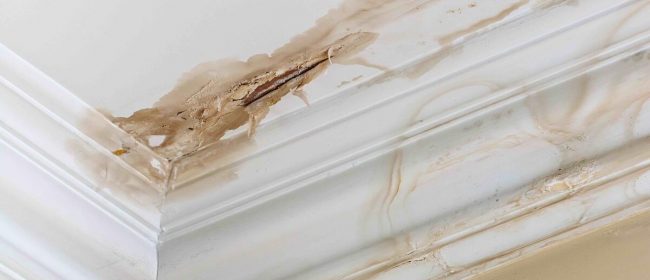Picture this: you’re walking down to your basement to grab something from storage when you notice an unwelcome surprise—puddles of water mysteriously appearing on your foundation floor. That sinking feeling in your stomach is completely justified, as water infiltration through foundation floors represents one of the most serious threats to your home’s structural integrity and your family’s health. While the sight of water where it shouldn’t be is alarming, understanding the root causes can help you take swift action before a manageable problem becomes a costly disaster requiring extensive intervention from a water damage restoration company.
Understanding Foundation Floor Water Infiltration
Water leaking through foundation floors occurs when groundwater finds pathways through or around your home’s concrete slab or basement floor. This infiltration can manifest as anything from minor dampness to significant pooling, depending on the underlying causes and severity of the breach.
Common Entry Points
Foundation floors develop vulnerabilities over time through various mechanisms. Hydrostatic pressure from saturated soil pushes water against and under your foundation, seeking any available entry point. Small cracks in the concrete, gaps around utility penetrations, and joints between the floor and walls become highways for water infiltration. Even seemingly solid concrete is porous to some degree, allowing moisture to slowly migrate through the material itself under sufficient pressure.
The Role of Soil Conditions
Your home’s soil composition plays a crucial role in foundation water problems. Clay soils retain water and create significant hydrostatic pressure against foundation walls and floors. Sandy soils drain more readily but can shift and settle, creating new cracks and pathways for water entry. Soil that wasn’t properly compacted during construction can settle over time, pulling away from foundation elements and creating gaps where water can accumulate and penetrate.
Identifying the Primary Causes
Several factors contribute to foundation floor water leakage, often working in combination to create the perfect storm for infiltration. Understanding these causes helps homeowners address not just the symptoms but the underlying problems driving water intrusion.
Poor Drainage and Grading Issues
Improper lot grading represents one of the most common culprits behind foundation water problems. When soil slopes toward your home instead of away from it, rainwater and snowmelt naturally flow toward your foundation rather than being directed away from the structure. Clogged or inadequate gutters exacerbate this problem by allowing roof water to cascade directly against foundation walls, saturating the surrounding soil.
Foundation Settlement and Structural Movement
Over time, foundations naturally settle as soil compacts and shifts beneath them. This movement can create stress fractures in concrete floors, providing direct pathways for water entry. Differential settlement—where one part of the foundation settles more than another—creates particularly problematic cracks that tend to worsen over time without proper intervention.
Hydrostatic Pressure Problems
When groundwater levels rise due to heavy rainfall, snowmelt, or changes in local drainage patterns, the resulting hydrostatic pressure can force water through even minor imperfections in your foundation floor. This pressure is relentless and will exploit any weakness it finds, turning small cracks into significant leakage points.
The Consequences of Ignoring Foundation Water Issues
Foundation floor water leakage rarely improves on its own and typically worsens over time if left unaddressed. The consequences extend far beyond simple inconvenience, potentially affecting your home’s structural integrity, indoor air quality, and market value.
Structural Damage Progression
Water infiltration through foundation floors can undermine the structural elements that support your entire home. Prolonged exposure weakens concrete, corrodes reinforcing steel, and can destabilize foundation walls. The freeze-thaw cycle in colder climates accelerates this deterioration as water expands when it freezes, widening existing cracks and creating new ones.
Mold and Health Concerns
Persistent moisture in basements and crawl spaces creates ideal conditions for mold growth. These fungi can spread rapidly through your home’s HVAC system, potentially triggering respiratory problems, allergic reactions, and other health issues. The longer water problems persist, the more extensive mold contamination becomes, often requiring professional remediation by a water damage restoration company to properly address.
Property Value Impact
Foundation water issues represent serious red flags for potential home buyers and can significantly impact your property’s marketability and value. Insurance companies may also increase premiums or deny coverage for homes with documented water infiltration problems, making early intervention crucial for protecting your investment.
Professional Solutions and Prevention Strategies
Addressing foundation floor water leakage requires a comprehensive approach that combines immediate water removal with long-term prevention strategies. While some homeowners attempt DIY solutions, complex water infiltration problems typically require professional expertise to ensure effective, lasting results.
Immediate Response Measures
When you discover water leaking through your foundation floor, swift action minimizes damage and prevents secondary problems like mold growth. Remove standing water promptly, increase ventilation to promote drying, and document the extent of water infiltration for insurance purposes. Professional water damage restoration companies have specialized equipment to extract water, dry affected areas thoroughly, and monitor moisture levels to ensure complete remediation.
Long-Term Waterproofing Solutions
Effective foundation waterproofing often involves multiple strategies working together. Interior solutions include applying sealants to minor cracks, installing interior drainage systems, and using dehumidifiers to control moisture levels. Exterior approaches focus on improving drainage through proper grading, installing or repairing foundation drains, and applying waterproof membranes to foundation walls.
Understanding why water leaks through foundation floors empowers homeowners to take appropriate action before minor issues become major problems. Whether addressing immediate water damage or implementing preventive measures, professional expertise ensures solutions that protect both your home’s structural integrity and your family’s health.
